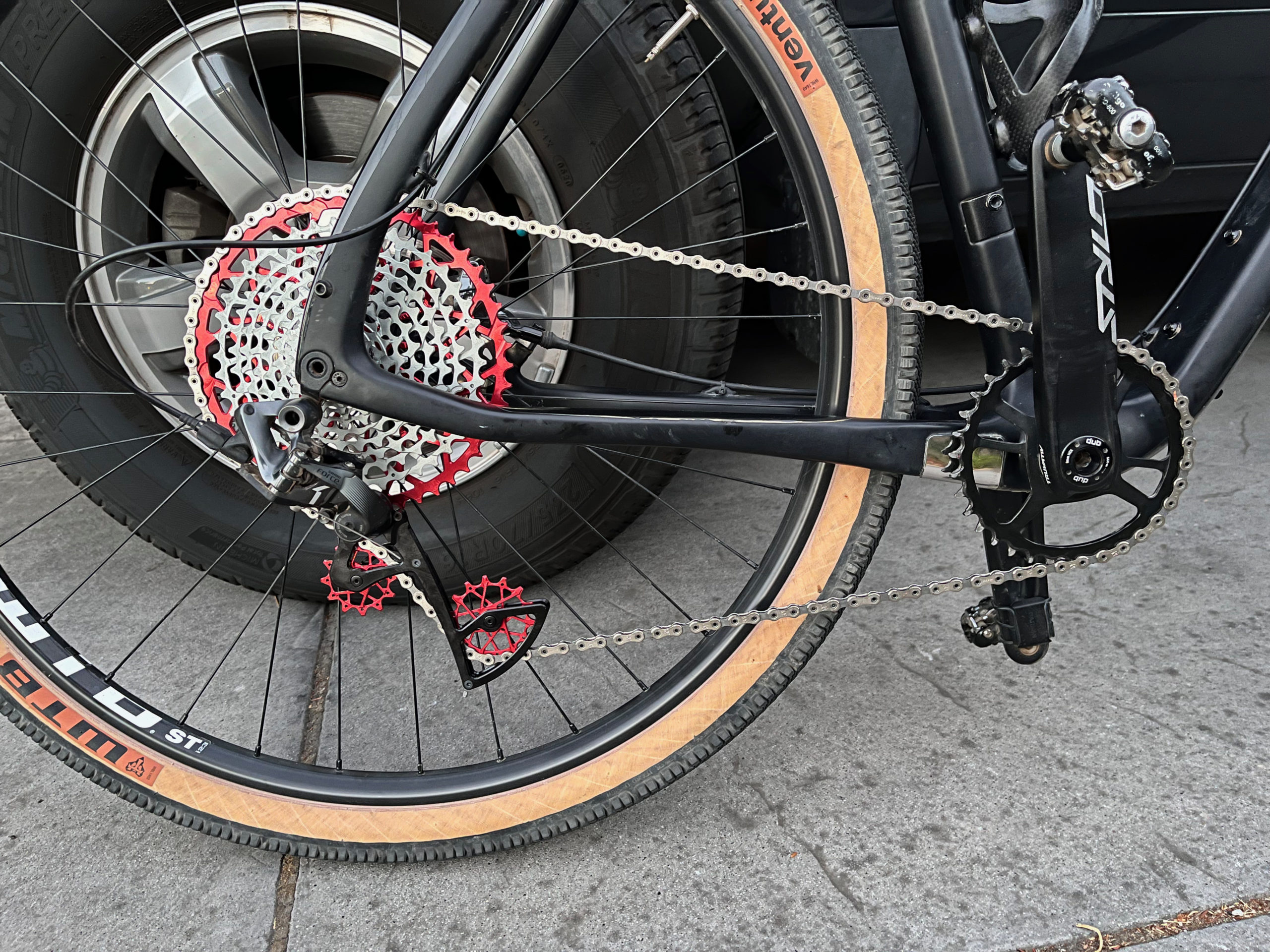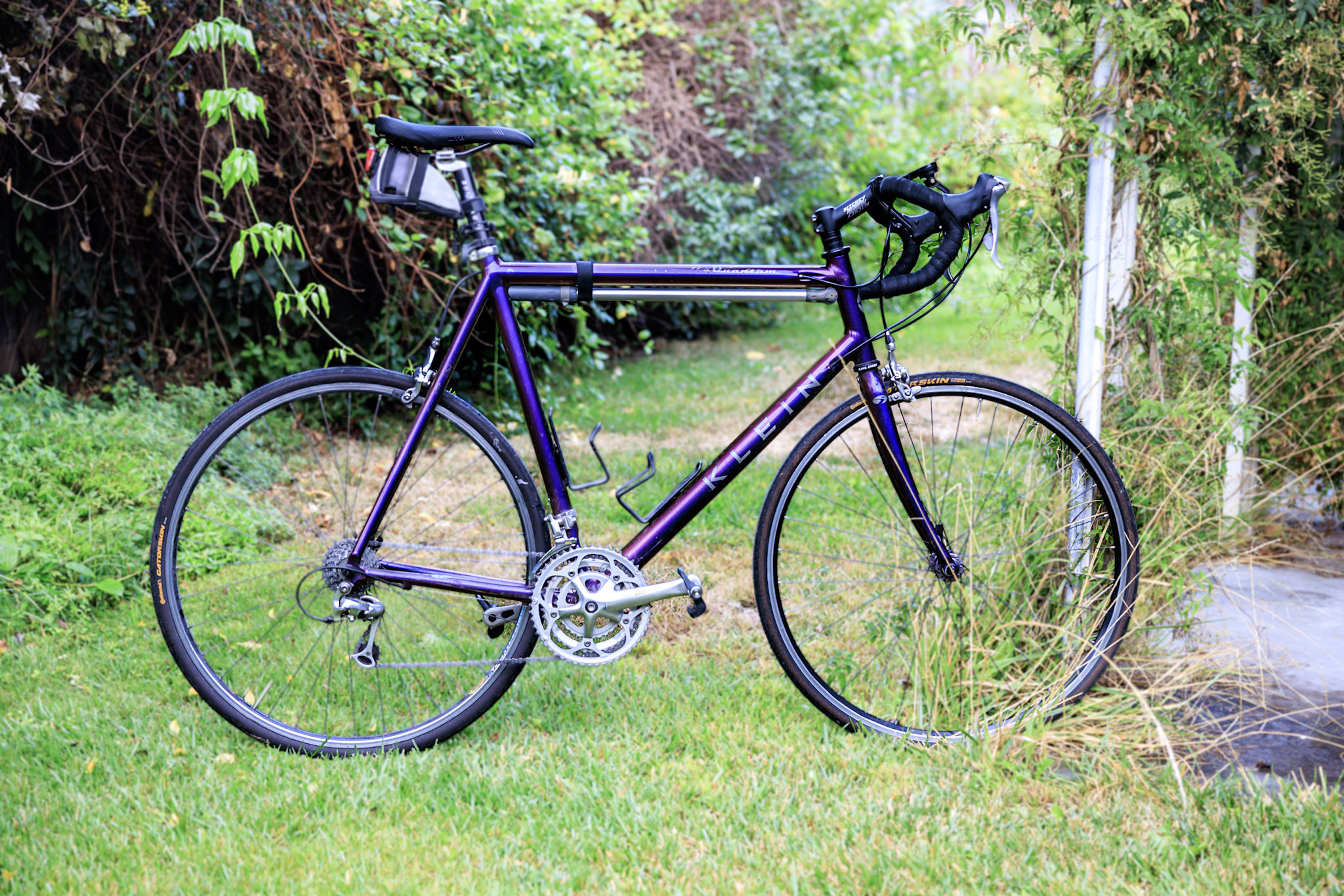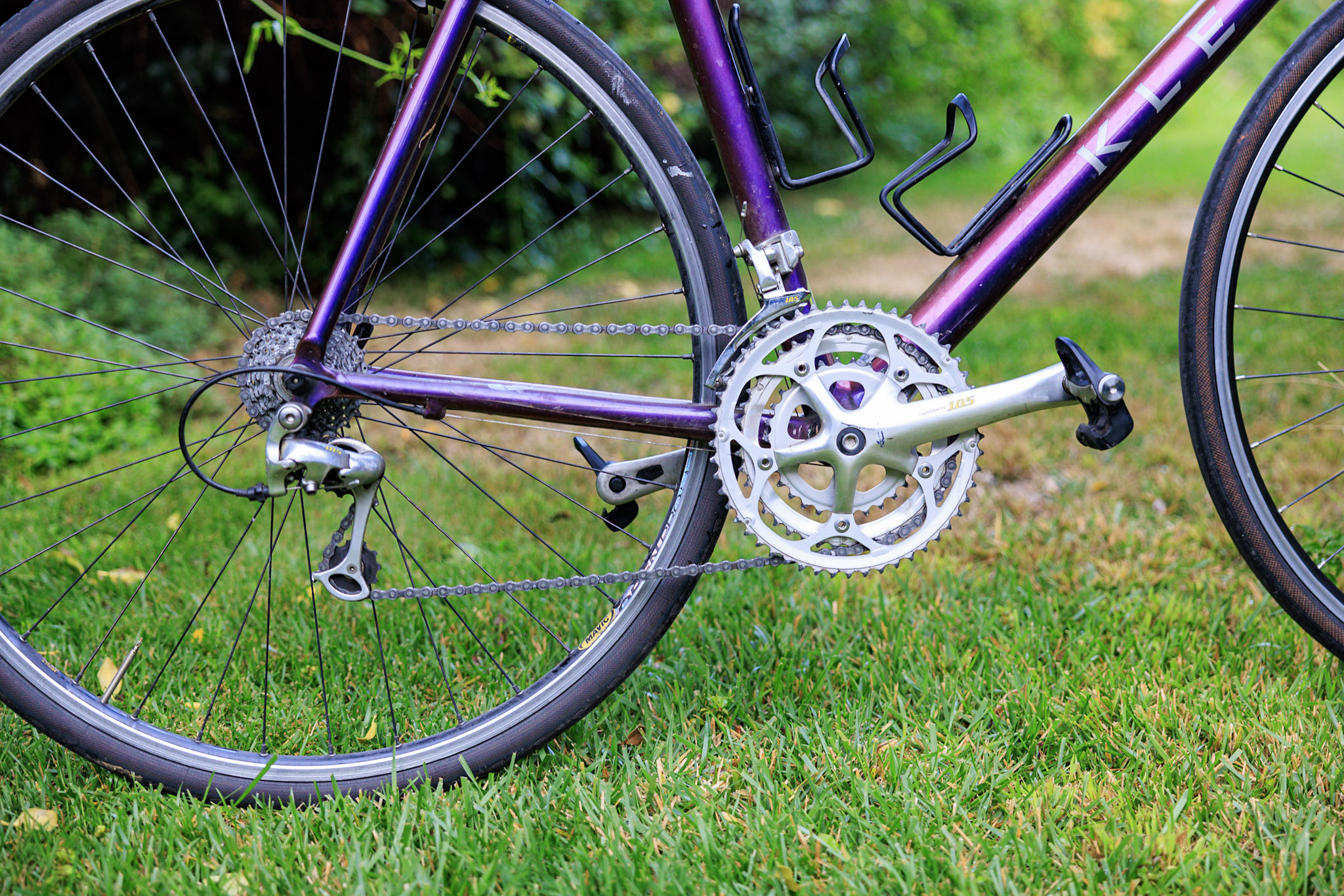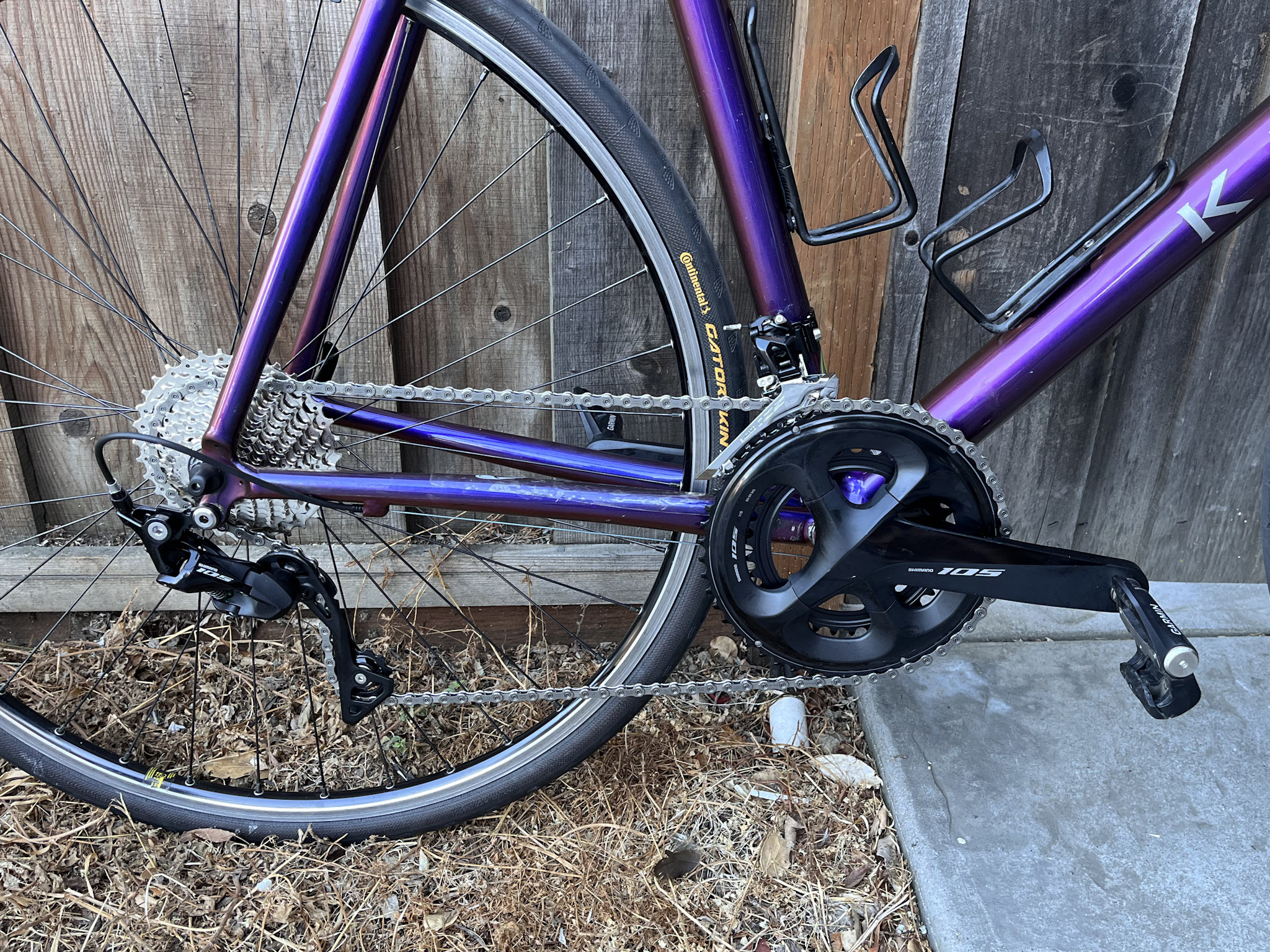Bike Mechanics: Upgrading the difficult… then the “impossible”
Note: This post is off-topic for this blog. But it needed a place to be posted. If you’re into bike mechanics, have fun. Otherwise, I advise clicking on another link.

So, I’ve been on a quest to tweak some bike gear lately and discovered a lot of problematic advice. “That’s not possible“. “Lots of complications” “Can’t work.” “Waste of time“.
Well, the first one was simply wrong and the reset depend on your perspective. Let me take a few moments to share what I learned DOES work on two projects.
Project 1: The Difficult – Wider range 1×11
2019 Salsa Cutthroat with a SRAM Force 1×11 setup that I wanted to get a bit lower gearing for steep hills around here. Not worried about increasing the top end. Didn’t want to replace the rear wheel which has the HG style freehub used for the last 20+ years on 8, 9, and 10 and some 11-speed setups.
So, what’s the big deal? Just put a big cassette on. They make plenty of them these days. Well… Kinda.
- Cassette availability: SRAM’s HG-compatible cassettes stop at 42t. I have that and want at least 50T
- Hubs: Most large cassettes require an XD driver on the freehub. Some hubs can be changed easily, some maybe, some not. Mine was in the ‘can’t find one’ category
- Derailleur: The SRAM Force 1 (and most other road derailleurs) isn’t rated for cassette cogs that big. The longer cage varieties like this one can get to 42 but some only to the upper 30s. Also, the derailleur’s total tooth takeup (difference between largest and smallest) gets strained beyond ~37t. 50-11 = 39T to take up.
- Shifter. This is a drop-bar gravel bike. It has road shifters. This means that its ‘actuation ratio’ (the amount of cable pulled per click) is set up for the indexing of a road 11 speed. This is not compatible with an 11s mountain rear derailleur which expects a mountain shifter. Ugh. Why?
Options and issues
The cassette has a few options
- SRAM’s new Eagle series can be had up to 50t in an HG-compatible form. Unfortunately only in 12 speeds though. Well isn’t that a good thing? Upgrade to 12 speed. Well, according to SRAM, that requires replacing the whole group. AND moving to electronic shifting. (A good resource on compatibility)
- Aftermarket cassette.
- Lots of people point to the e*Thirteen gear. Nice stuff and they offer an 11-speed 9-42 (511%) cassette. But only in XD driver.
- Garbaruk makes a beautiful 11-speed 11-50t, HG (also XD option) cassette. One piece of steel machined into the first 10 and an aluminum 50t for only 314g
What about that freehub?
- Some wheel manufacturers offer easy replacements of an HG driver with an XD one. However, not this hub.
- It’s worth noting that the XD freehub exists mainly to allow sub-11T sprockets. Wide range XD cassettes currently go to 10T usually with 9T possible. But I’m fine sticking with 11T
Derailleur and shifter
More range requires some sort of change since a) even the long cage installed only is rated to 42t and b) road derailleurs don’t clear really big cogs naturally.
- Get a mountain derailleur. Do it the SRAM way: To solve the compatibility with the shifters, SRAM’s way is to go to electronic shifting. Tell the shifter it is shifting mountain and you’re good. I’m not yet ready to go there, particularly on a gravel bike. That’s expensive because it requires both a new derailleur and a new shifter (and probably new brakes). And I don’t want more batteries to charge.
- Get a mountain derailleur but modify the system. There are a couple of approaches to adapting the actuation ratios from “Exact Actuation” (road shifters) to “X-Actuation” (mountain derailleurs). BTW, what were they thinking with that naming?
- A company called Ratio Technology offers conversion kits to make an 11s road shifter into a 12s mountain shifter. It takes replacing the cam and ratchets in the shifter and a fin (cable cam) in the Eagle derailleur. So kit+new derailleur but no new shifters/brakes.
Note: The number of ‘speeds’ is controlled by the shifter NOT the derailleur. The indexing happens upfront. The derailleur is ‘analog’ and will do what it’s told. - They also offer a cable fin kit to just convert an Eagle (MTB) derailleur to accept inputs from a road shifter. This is part of the above kit but leaves you with an 11s setup. So new derailleur + adapter kit only but remain 11s
- One is an inline ratio adapter device like the Wolf Tooth Tanpan that can be used to adapt road shifters to mountain derailleurs in the 10s or 11s ratios. The downside is that the adapter has to be found a home somewhere inline in the cable path. New derailleur + adapter, remain 11s
- A company called Ratio Technology offers conversion kits to make an 11s road shifter into a 12s mountain shifter. It takes replacing the cam and ratchets in the shifter and a fin (cable cam) in the Eagle derailleur. So kit+new derailleur but no new shifters/brakes.
- Modify the existing road derailleur.
- Garbaruk (and I think others) offer extended cage replacements for standard SRAM road derailleurs. The cage is longer to absorb greater tooth difference as well as repositions the sprocket geometry to fit around the larger sprockets.
- Another option is a Wolf Tooth Roadlink which repositions the rear derailleur to allow it to fit larger cogs. This does depend on the existing derailleur to be able to adapt to the range on the cassette. This can work for those not wanting to go all the way to an 11-50
Final solution
I finally decided to modify my Force 1 derailleur:
- Garbaruk 11-50 HG drive cassette
- Garbaruk extended rear derailleur cage for SRAM 11/12 speed
- Garbaruk oversized jockey pulleys. These are totally optional and mostly for bling (I got them in anodized red like the 50T sprocket) but they are supposed to work a tiny bit better on the bigger cassette.
I liked the limited modifications necessary with this solution. Swapping a derailleur cage is simple nuts and bolts thing. All the parts from the same company who built them to work together (and several reviewers confirming the effectiveness). The only real downside in my mind was direct ordering all the way from Poland (with one potentially back-ordered part to boot). Where’s my instant gratification? But in my case, I was delighted with the experience. I ordered on a Thursday (‘free’ shipping option, no expedite), they shipped Friday and I had parts in hand, post-customs in California Monday night. Your mileage will almost certainly vary. I got very lucky. But it speaks to the general efficiency of the process.
Note: My runner-up was the Ratio fin kit. Based on the design and reviews from those who’ve installed it, the part just works. A bit more fiddly to install than a cage but still home mechanic work. Note that it requires an upper-tier SRAM derailleur (like the Force) to work because the fin is riveted on cheaper ones. I was tempted by the 12-speed conversion option too but didn’t want to be changing out parts that are very much part of how the shifters ‘feel’.
But does it work?
Yes, it does. The installation was straightforward with good instructional videos. The only tricky part is getting the derailleur tension retrimmed but that’s just me (I don’t know why I can’t master this). The 34-50 combo at 19.4 gear inches allows for near-tractor torque. For comparison, my old road triple (read below) had a granny gear of 32in, my also ancient Ventana trail bike triple granny beats it slightly at 18.1 but that was designed for climbing MOUNTAINS! Oh, and it looks great.
| Before | After |
| 34t Chainring 11-42t Cassette SRAM Force 1 rear derailleur Low gear: 23.1 in (4.5 mph @ 65 rpm) High gear: 88.4 in (23.7 mph @ 90rpm) Range: 382%   | 34t Chainring Garbaruk 11-50t HD Cassette Garbaruk Extended derailleur cage Low gear: 19.4 in (3.8 mph @ 65 rpm High gear: 88.4 in (23.7 mph @ 90 rpm) Range: 456%   |
Project 2: The “Impossible” – 9-speed to 11-speed
Give a 2002 Klein Quantum a lower granny gear and an update. It came with a Shimano 105 road triple chainring setup with a granny gear of 32 gear inches. In 2002, this is how you got both low gearing and wide range. However, it is still significantly higher than either my gravel or mountain bikes. Of course, being a road bike, it also topped out at 115 inches for speed in the flats. This is much higher than the gravel 1×11 (88in) or even the mountain triple (100). But things have changed in the world of drivetrains in the last 20 years.
Now for a bit of a journey into the changes in road componentry in the last two decades:
- The most notable change has been the ability to put wide-range cassettes on the back. Back in 2002, this bike was equipped with a conventional (for the time) 12-25t cassette to go with a less conventional (on a non-touring bike) 52-42-30 triple set of chainrings. Modern non-race road cassettes regularly go to 32T and some higher.
- In addition, there has also been the advent of the ‘compact’ chainring setup at 50-34t instead of a more traditional 52-39 which allows for some lower gearing
- The Klein was also originally a 9-speed configuration while the world has moved on through 10, 11, and even 12-speed rear setups. (Are you old enough to remember when a road bike was called a “10-speed” because it had a 2×5 setup?)
- Like in the gravel setup, (since gravel bikes are mostly road components until recently), the rear hubs have had the same spacing and freehub since the 8-speed days in the 1990s. This carried all the way through 10-speed configurations officially. This included both Shimano and SRAM using a common freehub ‘driver’ design known commonly as an HG driver. This is a standard, splined cylinder on the hub that holds all of the sprockets of the cassette and allows freewheeling. But, the advent of 1x drivetrains has designers wanting both bigger AND smaller sprockets so the XD standard was released by SRAM (and now offered by everyone but Shimano) to support 10T (now common) and even 9T (SRAM hasn’t done it yet but others have) small cogs which when paired with a 52t top ring makes for amazing range. So, 12-speed SRAM gear wants XD drivers and Shimano 12s gear wants yet something different.
- Other things have happened too. Brakes are better engineered for more and more modulated power delivery to the brakes. Cables are now ALL routed under the bar tape for a much cleaner layout. Shifters and derailleurs require much less force and travel to make the shifts (the 5500 series front triple requires a wrist-wrenching ~45 degree twist to the lever)
The net result of all of this is that it is now possible to simplify and lighten the drivetrain by going to a 2x wide range setup and get a lower low AND a higher high gear ratio.
But how to do it?
I first started down the rabbit hole of the intermediary 10-speed configurations. Why? Because 10-speed is a drop-in upgrade on my solid (aka strong) wheels (being a ‘Clydesdale’ rider, I don’t mess with wheels that don’t break) and brings most of the range I want. Rear derailleurs are rated to 30T and widely reported to work fine to 32t. Cassettes are available in that size. The later 10-speed generations have nearly all of the refinements of the following 11-speed generations. And since it would be used gear, I could move up to Ultegra tier and still have it be relatively inexpensive. In theory. A bonus is that the first generation of 10-speed components still have the right vintage look for an early 2000s bike even though they are a decade newer. The second-gen 10s and later go away from the ‘silver’ color schemes to grey then all the way to black and more angular styling. Nothing wrong with that, but it’s different.
So I began the search.
Yes, it was going to be complicated finding a 10s group set that had the GS (longer) derailleur cage AND the compact crank (most have 52/39) AND 175mm crankarms (most are 170). In fact, it turned out to be downright exotic. That combination was technically available in the 6700 series Ultegra, but nowhere to be found.
Ok, shift to collecting the parts individually. GS derailleurs tend to be a bit more expensive and much less available but they are there. Although they tend to be priced nearly as much as a new 105 series one. Shifters are a challenge to find in good condition. It seems that grinding your shifters into the ground is a common reason for upgrading so the old ones are often beat up. But the real deal breaker was the crankset. 175mm compact configuration is less common and other people have figured out that the compact setup is better. Thus pricing ends up 2x or 3x the price of more common configurations. Used parts were reaching or exceeding the price range of a new 11-speed Shimano 105 R7000 territory. That’s silly.
What about that 11-speed 105 R7000 configuration?
By all accounts, it is excellent. It is value priced. Looks good (although not vintage). And it is the end of the line for Shimano mechanical shifting. They just released the new 105 with Di2 and say that is the future.
Nope! No Way!
Can’t be done with an 8-9-10 speed driver. No way says nearly everything I find online for days. You’d need a new wheel (or a rebuild with a new hub) they say. Search after search says the same thing. Then a glimmer of hope appears. In fact three with varying complications:
- Use an MTB 11-speed cassette. For some reason, even though they are the same number of sprockets and mount to the same driver, they are 1.8mm narrower than a road 11-speed and thus can fit onto a 10-speed HG driver. Why is this true? Why is it so poorly documented? Why do so many people on the Internet not know this? No idea. But it is an option.
The only real downside is that most 11s MTB cassettes tend to run larger than makes sense on a 2x road setup with the small ones having a 40T. This would then probably require running a MTB rear derailleur which is questionably compatible. And unless you go to an XTR range ($$$) they’re heavier. - Another option several people share is to lathe out 1.8mm from the back of a cassette. There are even a couple of companies that will do it for you. Then it seats down properly on the 10s HG driver. Ok. That works. But you’ve got to ship it away and will have to be done again if/when it wears out.
- Replace the 10s freehub body with a very similar (1.8mm shorter) 11s version. It turns out these can usually be replaced as a spare part and Shimano has basically used interchangeable parts on them for decades. However, there are some less clear implications here. First off, there is no replacement 11s freehub sold that is marked for compatibility with an older 9s hub. So there is some futzing to do. Also, it appears that doing so alters the axle alignment and means the wheel should be re-dished (ugh).
The answer
Then the REAL answer shows up thanks to helpful people on a great Facebook group “Home Bicycle Mechanics“: Shimano makes an 11-speed cassette with the 10-speed spacing. In fact, they make TWO of them. What? Why is everyone insisting that it can’t be done or needs contortions to make it work? Why is this not listed as an obvious upgrade path by Shimano or most of the web pages, videos, etc. out there? I cannot explain it. But I document it here in the hope that in the future someone will find it and it will help them.
For the record, the parts are either an HG700 (105 level) or an HG800 (Ultegra level). These are 11-34 ‘road’ 11-speed cassettes that are “compatible with both 10 and 11-speed freehubs”. For what it’s worth, it appears the reason Shimano is comfortable making this one is that the large 34t sprocket is large enough to clear the receding spoke line even with the hub recessed the extra 1.8mm. In effect, they are taking the same approach as the machine out a recess custom solution. They include a 1.8mm spacer if used on an 11s driver.
Conclusion
So there is the answer to the “impossible” upgrade from 9-speed (or frankly 8-speed) components to 11-speed in the Shimano world. Not impossible at all. In fact doable with off-the-shelf parts. You just have to ask nicely.
Note: All Shimano cranksets after 9-speed are incompatible with a 9-speed bottom bracket. With the move to 10 speed, they also went to external bearing bottom bracket and crank axles as part of the drive side unit that slides through to a clamped on left crank arm. But changing out the bottom bracket is straightforward as my frame uses the archaic BSA size and thread standards that is still in use and this must be done no matter what the upgrade path.
How did it turn out? Fantastic. I did a full teardown and overhaul in about a day (not rushing and not having done such work in years). The only real glitch was that for some reason the normal Shimano bottom bracket for 105 and Ultegra is the BBR60. But they changed the size a while back and the standard tools no longer fit it. For a while, they included an adapter, but have stopped. This came as a surprise to me and several mechanics. And the tool is really hard to find in a hurry. Full thanks to Mike at Chain Reaction in and Gebhard at Veloro Bicycles in Redwood City for going out of their way to make sure I could do my project on time while we waited for Shimano to late-ship the tool.
The improvement in shifting over 4 generations is actually surprising. The original 105 5500 was pretty solid. But R7000 is remarkably better. Crisper shifting, and it shifts under (moderate) load without complaining. The brakes are also notably more powerful and easily modulated (with the same pads and rims) and the cranks are also noticeably stiffer. I’m quite pleased.
| Before | After |
| 9-speed Shimano 105 5500 Triple 52-42-30 Chainrings 12-25 Cassette Low Gear: 32 in Top Gear: 115 in Range: 359%   | 11-Speed Shimano 105 R7000 Double groupset (The last mechanical 105 groupset) 50-34 ‘Compact’ Chainrings 11-34 Cassette Low Gear: 26.9 in Top Gear: 122 in Range: 454%   |
Oh, and if this amused you, you might find the next project of restomodding a 1990 Ligtespeed titanium frame interesting as well (if less convoluted)